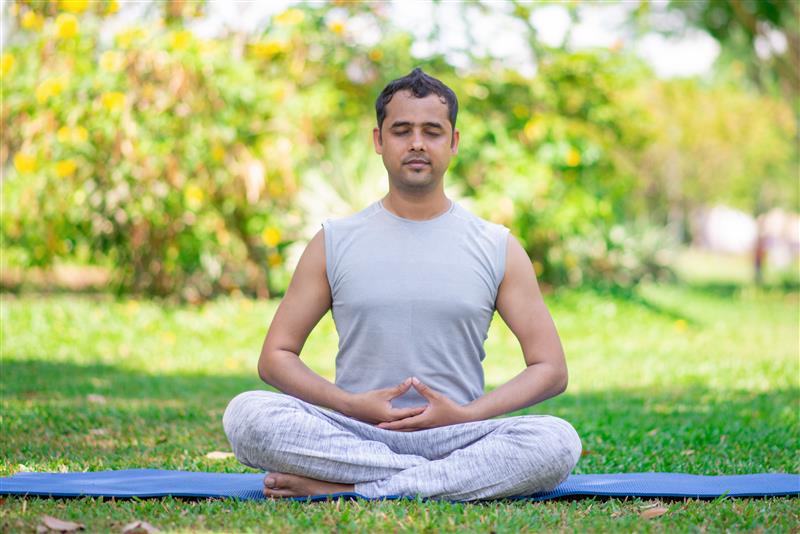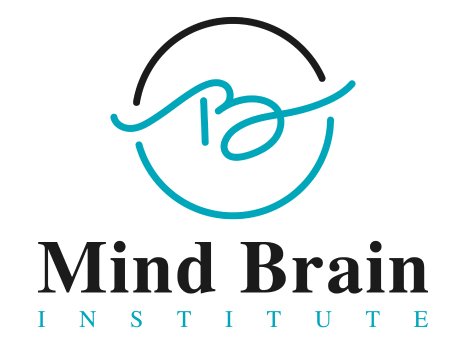
- Posted By Dr. Anuranjan Bist
- Comments 0
Table of Contents
Introduction: The Crisis of Depression
Depression affects millions globally and demands holistic solutions. Depression is one of the most pressing global health challenges of our time. According to the World Health Organization, more than 280 million people worldwide suffer from depression. Characterized by persistent sadness, hopelessness, fatigue, and a loss of interest in activities, depression can deeply impair a person’s ability to function. While conventional treatments—medications and psychotherapy—remain vital, they are not always sufficient or accessible. Increasingly, there is a global movement toward integrative approaches, and at the heart of this shift are yoga and meditation.
Yoga and meditation are ancient practices with modern relevance. As mind-body therapies, they offer not just symptomatic relief, but also an opportunity for deep healing. This blog explores the scientific, psychological, and spiritual basis for using yoga and meditation in treating depression, with an emphasis on practical application and integrative mental healthcare.
Understanding Depression Through the Mind-Body Lens
Traditionally, psychiatry has focused on the brain: neurotransmitters, genetics, and pharmacology. However, depression is not merely a chemical imbalance; it is a disorder of disconnection—between brain and body, thought and emotion, self and society.
Yoga and meditation reintroduce the missing link: embodiment. By grounding awareness in the present moment and reconnecting with bodily sensations, breath, and consciousness, these practices restore balance to a system in distress.
Emerging research in psychoneuroimmunology and interoceptive neuroscience supports the hypothesis that what heals the body also heals the mind. This is where yoga and meditation shine.
The Science of Yoga for Depression
1. Neurobiological Effects
Yoga has measurable effects on brain structure and function. Neuroimaging studies show increased gray matter volume in the hippocampus and prefrontal cortex—regions implicated in mood regulation and executive functioning. It also increases levels of gamma-aminobutyric acid (GABA), a neurotransmitter known for its calming effects.
2. HPA Axis Modulation
Chronic stress dysregulates the hypothalamic-pituitary-adrenal (HPA) axis, leading to elevated cortisol levels—commonly observed in patients with depression. Yoga normalizes this stress response, reducing cortisol and promoting parasympathetic nervous system activation.
3. Inflammation and Immunity
Low-grade systemic inflammation is a known contributor to depression. Regular yoga practice has been shown to reduce inflammatory markers such as IL-6 and C-reactive protein, thereby improving both mood and immunity.
Meditation and Mindfulness: Rewiring the Depressed Brain
Meditation, particularly mindfulness-based meditation, changes the brain in powerful ways:
1. Default Mode Network (DMN) Regulation
The DMN is a network associated with self-referential thoughts and rumination. Overactivity in the DMN is linked to depressive symptoms. Mindfulness meditation reduces DMN activation, allowing individuals to break the cycle of negative thinking.
2. Increased Cognitive Control
Regular meditation enhances activity in the dorsolateral prefrontal cortex, improving attention, emotional regulation, and decision-making—skills often impaired in depression.
3. Amygdala Desensitization
The amygdala, the brain’s fear center, is hyperactive in depression. Meditation reduces amygdala reactivity, leading to a calmer, more stable emotional baseline.
Yogic Framework for Depression: Beyond the Brain
From a yogic perspective, depression can be understood through the lens of the five koshas—the sheaths or layers of the self:
Annamaya Kosha (Physical Body) – Stagnation, lethargy, and poor diet worsen depressive states.
Pranamaya Kosha (Energy Body) – Dysregulated breath and life force flow.
Manomaya Kosha (Mental Body) – Dominance of tamasic (inert) and rajasic (restless) tendencies.
Vijnanamaya Kosha (Wisdom Body) – Loss of clarity and insight.
Anandamaya Kosha (Bliss Body) – Disconnection from inner joy and spiritual identity.
Yoga aims to balance all five koshas, restoring inner harmony rather than merely alleviating symptoms.
Clinical Evidence Supporting Yoga and Meditation for Depression
Multiple randomized controlled trials (RCTs) and meta-analyses now support yoga and meditation as effective adjunct treatments for depression:
Harvard Medical School found that yoga improved depressive symptoms and functioning in patients with major depressive disorder (MDD), particularly when practiced at least 3 times per week for 8 weeks.
A 2017 meta-analysis in the journal Depression and Anxiety showed that mindfulness-based interventions had moderate to strong effects on reducing depressive symptoms, both in clinical and non-clinical populations.
In India, yoga-based group interventions have shown superior outcomes in treatment-resistant depression when compared with pharmacotherapy alone.
Practical Techniques: Yoga and Meditation Protocols for Depression
1. Asana (Postures)
Focus on slow, grounding postures that stimulate the parasympathetic nervous system:
Tadasana (Mountain Pose) – Re-establishes verticality and presence.
Balasana (Child’s Pose) – Promotes surrender and safety.
Setu Bandhasana (Bridge Pose) – Opens the chest, improves circulation.
Viparita Karani (Legs-Up-the-Wall Pose) – Reduces anxiety and fatigue.
Duration: 30–45 minutes per day, 5 days/week.
2. Pranayama (Breathwork)
Depression often leads to shallow or irregular breathing. Pranayama techniques restore energetic balance.
Nadi Shodhana (Alternate Nostril Breathing) – Calms the nervous system.
Bhramari (Bee Breath) – Reduces mental agitation.
Ujjayi (Ocean Breath) – Enhances concentration.
Duration: 10–15 minutes per day, ideally before or after asana practice.
3. Dhyana (Meditation)
Start with guided mindfulness practices. Progress to silent observation:
- Body Scan Meditation
- Loving-Kindness (Metta) Meditation
- Mindfulness of Breath
- Self-Inquiry (Atma Vichara) – In advanced stages.
Duration: Begin with 10 minutes and increase to 30 minutes daily.
4. Mantra and Sound Healing
Chanting mantras like “Om,” “So Hum,” or “Gayatri Mantra” produces vibrational resonance that helps quiet the mind and elevate mood.
Yoga as a Lifestyle: Sattvic Living for a Sattvic Mind
Depression thrives in disconnection and disorder. Yoga encourages a sattvic (pure, harmonious) lifestyle:
Diet: Emphasize whole, fresh, plant-based foods.
Sleep: Establish regular sleep cycles (circadian alignment).
Digital Hygiene: Reduce overstimulation.
Nature Connection: Walks in nature (prithvi sadhana) help regulate circadian rhythms and improve mood.
Service (Seva): Helping others shifts the focus outward, reducing self-absorption and loneliness.
Integrating Yoga and Psychiatry: A Holistic Model of Care
While yoga and meditation are powerful, they should not be viewed as replacements for psychiatric treatment. Instead, they serve as complementary modalities within a biopsychosocial-spiritual model of care.
At the Mind Brain Institute in New Delhi, India, we integrate yoga-based therapies alongside neurofeedback, TMS, and pharmacotherapy to offer personalized, multimodal interventions for depression. A typical care plan may include:
- Clinical diagnosis and symptom tracking
- Medication (if needed)
- Yoga therapy sessions 2–3 times/week
- Mindfulness-based CBT
- Lifestyle coaching
This integrative approach addresses not just symptoms but root causes—reconnecting patients with their bodies, emotions, and sense of purpose.
Patient Testimonial: Reclaiming Joy Through Yoga
“Before coming to the Mind Brain Institute, I had tried everything—from medications to talk therapy. It helped, but something still felt missing. Through yoga and meditation, I learned to listen to my body, to breathe again, to feel. I now sleep better, laugh more, and feel like myself again. Yoga didn’t just heal my depression—it reconnected me to life.”
— A.R., 35, New Delhi
Conclusion: Rewiring the Mind Through the Body
Depression may begin in the brain, but it is felt in the body and healed through the heart. Yoga and meditation provide an ancient yet timely roadmap for recovery—one that empowers individuals not just to manage their symptoms but to awaken to their inner healer.
These mind-body techniques represent a profound paradigm shift in mental health: from pathology to wholeness, from disease management to self-realization.
If you or someone you know is struggling with depression, know this: healing is possible. It begins with a breath, a movement, a moment of stillness.
Interested in a holistic approach to healing depression?
At the Mind Brain Institute, New Delhi, in India, we offer integrated treatment programs combining psychiatry, yoga therapy, and brain-based interventions like TMS and neurofeedback.
Schedule a consultation today and take the first step toward inner balance.


